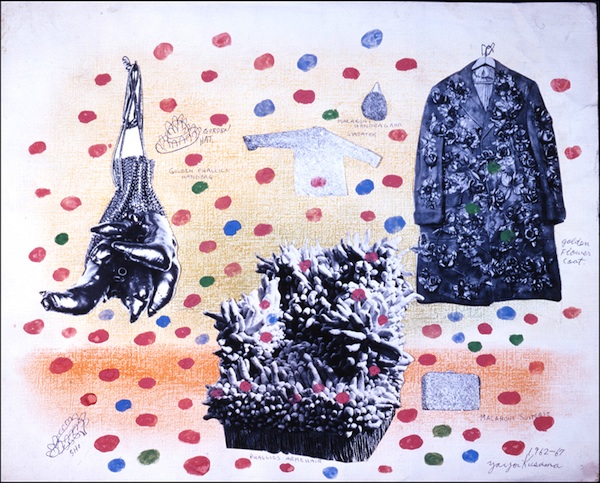At the heart of our Milky Way galaxy lies a giant.
It's a massive black hole999 Archives dubbed Sagittarius A* (pronounced "Sagittarius a star"), weighing as much as 4.3 million suns. After taking an unprecedented image of the object in 2022, astronomers have now captured a remarkable new view of the black hole, revealing its powerful, twisting magnetic fields. The scientists captured the black hole in polarized light, which involves using a filter to view different characteristics of the distant object. (Magnetic fields are created by moving, charged particles.)
"What we’re seeing now is that there are strong, twisted, and organized magnetic fields near the black hole at the center of the Milky Way galaxy," Sara Issaoun, a NASA Hubble Fellowship Program Einstein Fellow at the Center for Astrophysics Harvard & Smithsonian who co-led the research endeavor, said in a statement.
Black holes harbor so much gravity that not even light can escape — because they're almost unimaginably dense, massive objects. The more mass an object has, the stronger its gravitational pull. If Earth was (hypothetically) crushed into a black hole, it would be under an inch across. So you might wonder, how can we see a black hole if it doesn't emit any light?
Although we can't see the actual object, we can see the matter — intensely hot gas — swirling around a black hole, called an "accretion disk." Some of this material inevitably falls into the black hole, never to return; much of it gets spewed back out into the cosmos, because black holes aren't efficient consumers of galactic material. Where the light ends at the center of the image is the point-of-no-return, called the "event horizon." That's the final boundary between space and the black hole.
In the orange-colored accretion disk, those vivid lines show the twisting structure of the magnetic fields in the donut-like disk. Ultimately, these magnetic fields can propel jets of matter out of the black hole's swirling disk of gas.
"By imaging polarized light from hot glowing gas near black holes, we are directly inferring the structure and strength of the magnetic fields that thread the flow of gas and matter that the black hole feeds on and ejects," Angelo Ricarte, a Harvard Black Hole Initiative Fellow who also co-led the research, said in a statement.
 The latest image of Sagittarius A* reveals the black hole's twisting magnetic fields. Credit: Event Horizon Telescope (EHT) collaboration
The latest image of Sagittarius A* reveals the black hole's twisting magnetic fields. Credit: Event Horizon Telescope (EHT) collaboration The new black hole research was published on March 27 in the peer-reviewed science journal The Astrophysical Journal Letters.
Importantly, the astronomers found that both Sagittarius A* and the black hole at the center of the galaxy M87 — an object 1,000 times more massive than Sagittarius A* — are similarly built: They both contain the same type of magnetic structures in their swirling disks, even though there's a giant size difference. This might be a common feature of most black holes — places still mysterious to us, but gradually growing less opaque.
To capture rare images of black holes (only these two black holes have been imaged), scientists use the Event Horizon Telescope (EHT), which is composed of radio telescopes all around Earth. Working together, they create a planet-sized array amounting to a virtual telescope. Expect these black hole images to grow more detailed and impressive in the coming years. Scientists are adding more telescopes to the EHT, called "The Next Generation Event Horizon Telescope," with the ability to make real-time movies of these cosmic behemoths.
Previous:The Garbage Man
Next:Lost in Boston
 The Feminist Horizon
The Feminist Horizon
 On Uncle Vanya: Part Two by Clancy Martin
On Uncle Vanya: Part Two by Clancy Martin
 TPR Softball: Failure’s No Success at All by Cody Wiewandt
TPR Softball: Failure’s No Success at All by Cody Wiewandt
 What We’re Loving: Toomer, Kusama, and Train by The Paris Review
What We’re Loving: Toomer, Kusama, and Train by The Paris Review
 The Midterms and the Turn Leftward
The Midterms and the Turn Leftward
 Watch: Dorothy Parker “Reads” by Sadie Stein
Watch: Dorothy Parker “Reads” by Sadie Stein
 Tonight! Join Us at the Strand by The Paris Review
Tonight! Join Us at the Strand by The Paris Review
 Maji Moto by Courtney Fitzpatrick
Maji Moto by Courtney Fitzpatrick
 Why Trump Is an Effective Negotiator
Why Trump Is an Effective Negotiator
 Saving St. Mark's by Lorin Stein
Saving St. Mark's by Lorin Stein
 Somebody Else’s Babies
Somebody Else’s Babies
 Fake Books, Real Books, and YA Austen by The Paris Review
Fake Books, Real Books, and YA Austen by The Paris Review
 This Saturday: Help St. Marks Books Relocate by The Paris Review
This Saturday: Help St. Marks Books Relocate by The Paris Review
 Saving St. Mark's by Lorin Stein
Saving St. Mark's by Lorin Stein
 Watch NASA video of total lunar eclipse from space
Watch NASA video of total lunar eclipse from space
 The Original House of Pies: SoCal Comfort by Aaron Gilbreath
The Original House of Pies: SoCal Comfort by Aaron Gilbreath
 Watch: Dorothy Parker “Reads” by Sadie Stein
Watch: Dorothy Parker “Reads” by Sadie Stein
 See You There: Paris Review at the Strand by Sadie Stein
See You There: Paris Review at the Strand by Sadie Stein
 Man Out of Time
Man Out of Time
 Chad Harbach on 'The Art of Fielding' by Robyn Creswell
Chad Harbach on 'The Art of Fielding' by Robyn Creswell
SNL third presidential debate: Bad hombres, nasty women & Trump's lossItalian Coast Guard videos show refugees pulled to safety in Mediterranean SeaSamsung's new tablet comes with the Note7's awesome GIF makerFacebook renews efforts to fight bullying with Safety Center relaunchThis artificially intelligent judge can predict verdictsMichelle Obama and Hillary Clinton are finally rallying togetherThe internet is celebrating this 6New Apple 135 storylines to follow during the 2016 World SeriesSamsung offers Galaxy S8 or Note8 at half price to customers who return their Note7Couple invites black metal band to join their engagement photosDJ Khaled documented his son's birth in the most DJ Khaled wayIndia's Reliance Jio is already the world's biggest data carrierEven with new concussion protocol, the NFL still has a player safety problemDonald Trump made money off his name – but that could be endingHow the AT&TThis man's tooth fairy letter to his stepdaughter is a thing of punCubs fans are getting very emotional over their team's historic World Series tripThe Walking Dead Recap: Season 7, Episode 1 reveals who Negan killsBenedict Cumberbatch is coming to save us from the election on 'SNL' NASA's Mars Perseverance rover films dust devil mayhem How to see 5 planets align in order for first time in 18 years Scientists film a jellyfish with a belly full of prey in the deep sea The vital telescopes discovering Earth Apple Intelligence: Apple announces new era of AI NASA announces UFO study starting this fall WWDC 2024: WatchOS 11 makes it easier to track your vitals A NASA rover just found trash on Mars Renault to develop cheaper EV batteries with CATL, LG Energy · TechNode WWDC 2024: Apple announces new Safari with Highlights and 'distraction NASA's Mars Curiosity rover spots rocks resembling fingers Photographer captures strange blue spiral of light in the night sky Watch NASA video of total lunar eclipse from space Baidu shares surge on growth prospects of robotaxi business · TechNode Tesla’s second Ant Group sees insurance business boom with 30% y WWDC 2024: AirPods will let you accept calls by nodding Dusty NASA images show why its Mars lander will soon run out of power NASA demonstrates power of Webb telescope with Spitzer comparison A meteorite punched a hole in a dog house. Now it's a collector's item.
1.8832s , 10130.5234375 kb
Copyright © 2025 Powered by 【1999 Archives】,Miracle Information Network